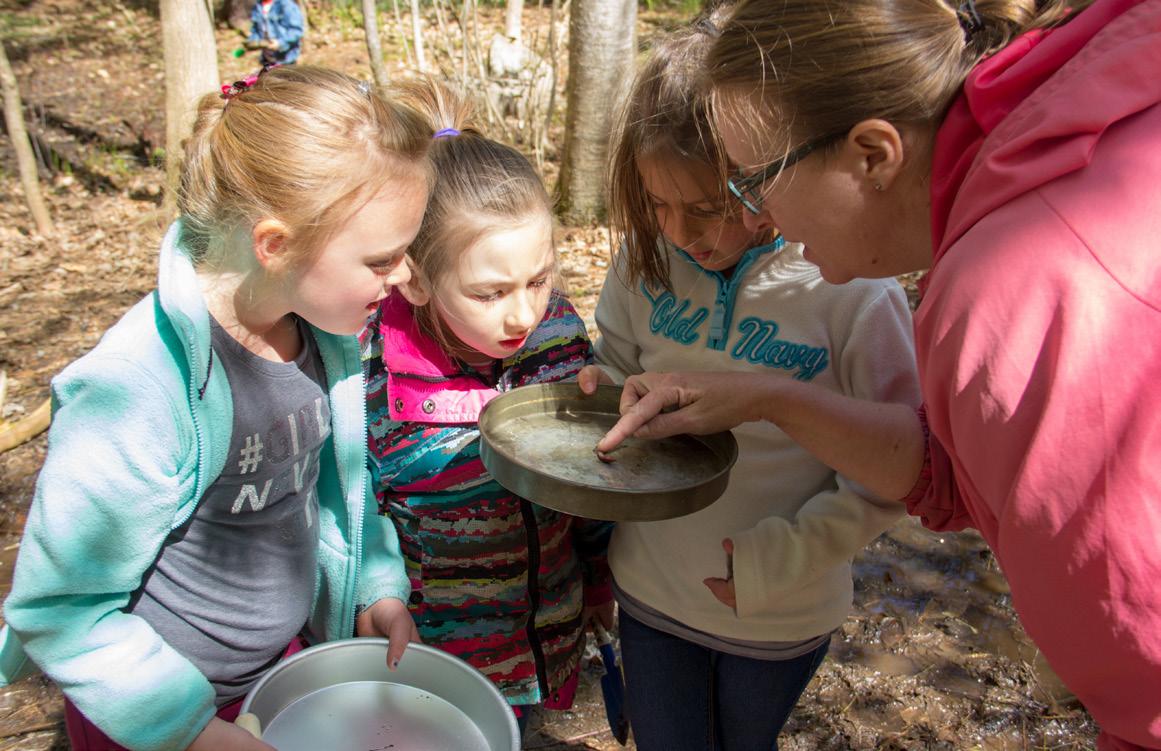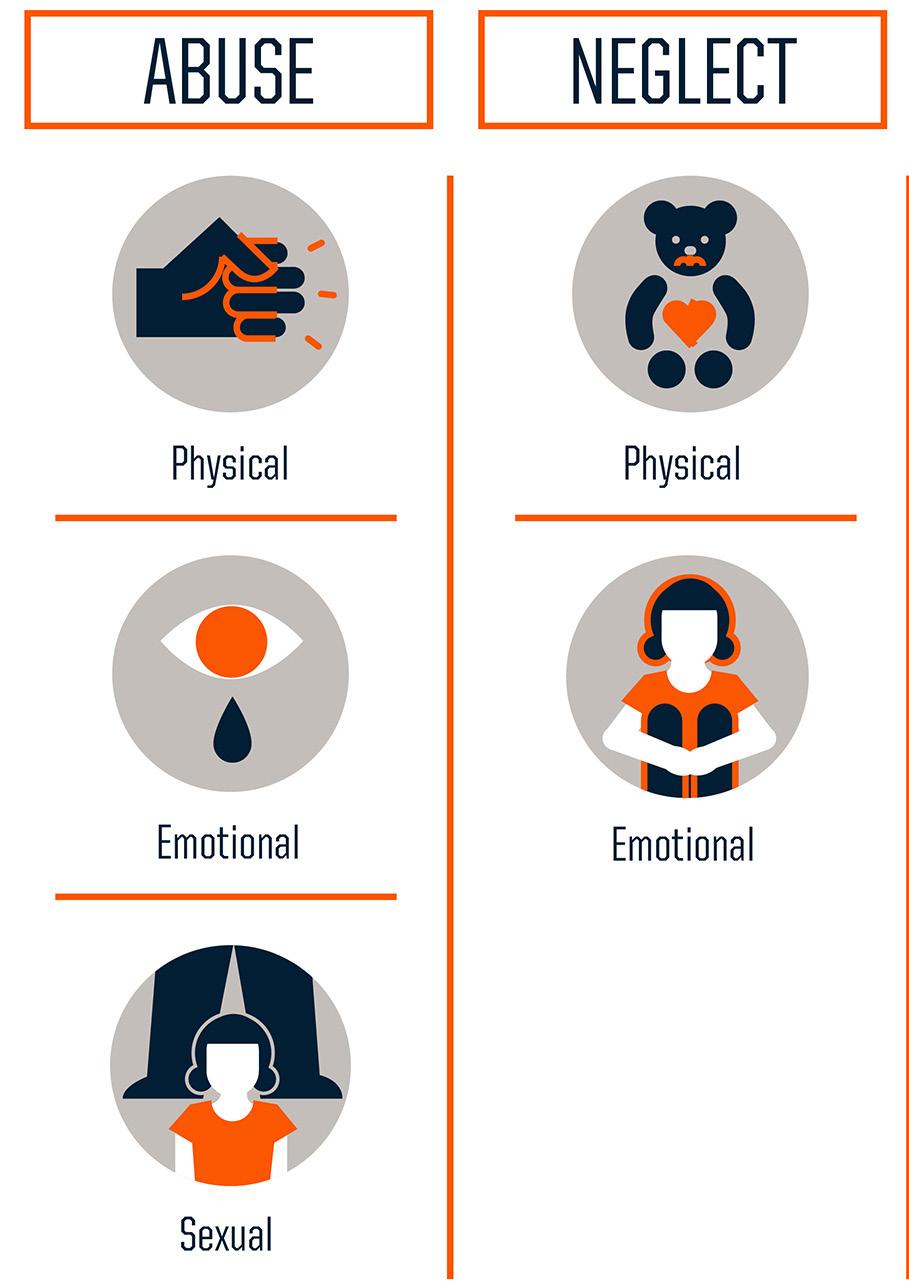
10 minute read
Nature Exploration in Mexico
by Maineea
N A T U R E E X P L O R A T I O N
M E X I C O , M A I N E
“Worms can have 100 babies!” exclaims one kindergartener. “And they have five hearts!” explains Mrs. Maggie Corlett. The lesson on worms is just the latest in a series of year-long exploration projects outside at Meroby Elementary School in Mexico.
Every Wednesday, unless it’s pouring or feels like 11 degrees or colder, the students in Kindergarten, 1st and 2nd grades take their learning outside, into the woods adjacent to the school.
Maggie Corlett and the kindergarten team-Kristen Giberson, Heidi Ferguson, and Jessica McMichael- started the Nature Exploration program three years ago, and ever since, the changes in the students’ behavior and ability to learn has grown.
“Trauma-based research has shown that spending time in nature has proven to be beneficial to helping students regulate emotions and behavior. Oxford County has some of the highest numbers when it comes to students in trauma, which adversely affects behaviors in the classroom. When we started going outside, some of the kids who struggled in the classroom became leaders in the woods.” The next thing we knew, the kids were growing and their ability to learn was expanding so we started spending more time in the woods. If we can come out here and get them stabilized, they get a break-they get the mental rejuvenation-and then they can go into the classroom and learn,” said Corlett.

The lesson on this day was all about worms. Students explored in the woods, looking for worms and sharing in their discoveries with each other. While in the woods the problem-solving and critical thinking skills are evident when students used long logs to build bridges over huge mud pits. “See that’s STEM,” said Corlett. “And that’s teamwork, they’re learning so many skills out here,” added Corlett.
While the science lessons are evident, the literacy component is incorporated when each of the four kindergarten classrooms break-out into their own individual outside classrooms, complete with log seats. Here, students take out clipboards and write about the worm as the lesson continues in an environment that Corlett says exposes many of these children to opportunities they don’t have at home. “Many of the children live in apartments with balconies and no yards. Some live where it’s not safe to just go outside and play. Many kids are told to stay out of the mud because they don’t have boots at home and their parents don’t want their shoes to get dirty because they only have one pair. Here we have boots donated, they all have a pair, and they can learn and explore,” said Corlett. The Nature Exploration program was so popular in kindergarten, it has since been expanded and will be in grades K-4 starting next year. Regardless of the time of year, Corlett says they always find an excuse to go outside, and she tailors the lessons to what the students are interested in at the time. While the class was studying the books, Caps for Sale, they all headed outdoors and acted the book out with all the trees around the school.

“We use the woods for everything! For math, if we’re practicing what makes five, we take out ten-frames and we let the kids come up with five-so five leaves or sticks. We would let them write five in the dirt; so, it’s your basic kindergarten curriculum just all outside. Then, we also bring the stuff from the woods into the classroom. So, if they love the mud, they then write about it and they’re more willing to make out the sounds because they’re out in the mud, so they know how to do it,” said Corlett.


Since the classes started going outside each week, Corlett says she’s seen the students’ vocabulary increase with reluctant readers seeking non-fiction books about what they’re studying outside, improving both their reading abilities and increasing their desire to read.
It’s an all-around win-win in the woods for everyone.
“This is the best! I love the woods!” said
kindergartner Paytin.

Trauma-Informed: How to Improve Self-Regulation and Connection in the Classroom
When it comes to helping students who have had adverse childhood experiences (ACEs), it’s important for educators to understand first what types of experiences their students have faced or are dealing with, the proper questions to ask, and then how to move forward to best help the child. Below is information to help guide you in your work as you advocate and support your students.

ACEs are broken up into ten kinds in three broad categories as pictured below.

ACEs QUIZ
An ACE quiz identifies the difficulty of a child’s upbringing. The test below tallies different types of abuse and neglect and other areas that would impact the upbringing of a child, and the impact that childhood will have on their likely future health problems. The higher the ACE score, the higher the risk for a later health issues. The test paints a picture for educators to understand what children are faced with and the barriers to learning before they even enter the classroom. ACE test Prior to your 18th birthday: 1. Did a parent or other adult in the household often or very often… Swear at you, insult you, put you down, or humiliate you? or act in a way that made you afraid that you might be physically hurt?
No___If Yes, enter 1 __
2.
3. Did a parent or other adult in the household often or very often… Push, grab, slap, or throw something at you? or Ever hit you so hard that you had marks or were injured? No___If Yes, enter 1 __
Did an adult or person at least 5 years older than you ever… Touch or fondle you or have you touch their body in a sexual way? or Attempt or actually have oral, anal, or vaginal intercourse with you? No___If Yes, enter 1 __
4. Did you often or very often feel that … No one in your family loved you or thought you were important or special? or Your family didn’t look out for each other, feel close to each other, or support each other? No___If Yes, enter 1 __
5. Did you often or very often feel that … You didn’t have enough to eat, had to wear dirty clothes, and had no one to protect you? or Your parents were too drunk or high to take care of you or take you to the doctor if you needed it? No___If Yes, enter 1 __
6. Were your parents ever separated or divorced? No___If Yes, enter 1 __
7. Was your mother or stepmother: Often or very often pushed, grabbed, slapped, or had something thrown at her? or Sometimes, often, or very often kicked, bitten, hit with a fist, or hit with something hard? or Ever repeatedly hit over at least a few minutes or threatened with a gun or knife? No___If Yes, enter 1 __
8. Did you live with anyone who was a problem drinker or alcoholic, or who used street drugs? No___If Yes, enter 1 __
9. Was a household member depressed or mentally ill, or did a household member attempt suicide? No___If Yes, enter 1 __
ACEs Increase H E A LT H R I S K S
Source: Centers for Disease Control and Prevention Credit: Robert Wood Johnson Found.
Student Reactions to Trauma
Molly Cevasco, Eric Rossen, & Robert Hull as seen on neatoday.org

Students experiencing trauma often display specific characteristics. These characteristics can be separated into three main categories: emotion and behavioral self-regulation, social skills, and cognitive functioning. All of these characteristics impact educational outcomes.
REGULATORY SKILLS
• Traumatic experiences may affect a student’s regulatory skills by impacting their ability to appropriately express and manage their emotions. Students may have difficulty labeling and recognizing their own emotions, or explaining their own emotional reactions to situations and events. • For many children who have experienced trauma, loud or busy activities can also be overwhelming and may affect their ability to regulate their reactions. This can be especially confusing for teachers if students respond negatively to highly desirable activities.
SOCIAL SKILLS
• Children affected by traumatic experiences frequently demonstrate disordered social skills. They may struggle to engage in appropriate play with peers. This can present in several different ways, including “over-involvement” in social interactions demonstrated as a lack of boundaries. • Children who experience trauma may appear withdrawn socially or may need to make themselves feel in control of even small situations. These students may display bullying behavior or may “talk back” to others in an effort to maintain their own control.
COGNITIVE FUNCTIONING
• Students may be easily overwhelmed and have difficulty following single or multi-step directions. They may appear inattentive or struggle to shift from one activity to another, despite significant prompting. Educators often mistake these behavioral cues for deliberate defiance. Students with trauma histories may also struggle to ask for help or, conversely, may be overly dependent on others to start and complete work. A trauma-informed approach to education aims to implement techniques that benefit students with trauma histories, educators, and the larger educational community as a whole. Such a model focuses on providing universal, tier-one interventions that provide valuable support to all students. Additionally, a trauma-informed approach abandons the notion that punitive discipline or special education referrals are a front line intervention when symptoms emerge. Rather, such an approach encourages educators to ask “what happened to you?” instead of “what’s wrong with you?”
Strategies to Support Traumatized Students
PROVIDE STRUCTURE AND A SENSE OF SECURITY,
INCLUDING DEVELOPING A SAFETY PLAN:
• Children who experience abuse often yearn for structure and predictability. Help students by clearly outlining daily schedules and providing them with a brief, private warning if you become aware of a change in the schedule. • Make a safety plan with the student, parents, and guidance counselor. The plan should outline strategies the student can use when feeling anxious or upset. It can also include appropriate school staff to speak with, places to go, hotlines to call, and activities they can do in the classroom and other parts of the school. Be clear with the student about activities that are always acceptable in your classroom and activities that are only appropriate at specific times. Students may benefit from visuals that they can reference when they begin to notice that they are feeling upset.
IDENTIFY TRIGGERS OF ANXIETY OR
CHALLENGING BEHAVIOR:
• Students who have experienced abuse may have difficulty remaining calm in frightening or anxiety-producing situations.
Keep in mind that loud noises (such as assemblies or fights), talking about violence, or raised voices might cause an emotional reaction. Offer the student a quiet place to stay until situations become calmer and be prepared for negative emotions and behaviors from the student in response to triggers.
DIRECTLY TEACH PROBLEM SOLVING SKILLS:
• Social skills and emotion regulation curricula are helpful, but they can be effectively supported with your own modeling. Be honest with students about how you’re feeling and talk through your actions in response to challenging situations. • Remember that while students are learning from your behavior, they are also learning from the behavior they observe at home. It may be confusing for a student who witnesses domestic violence at home to understand that violence is an inappropriate strategy at school. Help students find alternative responses and be clear with them about what is acceptable behavior at school.










